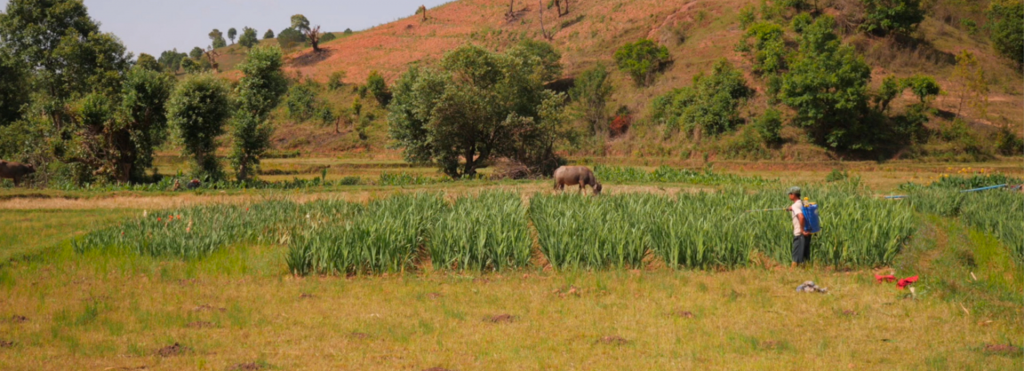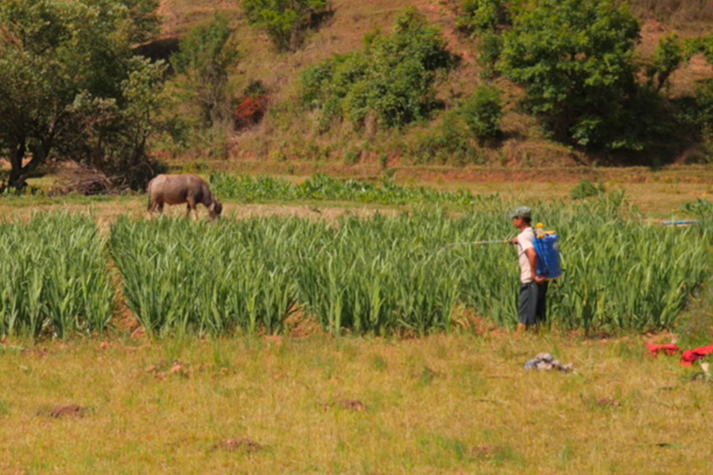Strengthening the business case for OSH compliance in Myanmar
The Vision Zero Fund has been working since 2017 to prevent work-related deaths and injuries in Myanmar’s ginger and garment supply chains. In its second phase, the project expanded its scope to the construction industry.
Learn more about how the project used social media to address COVID-19 in Myanmar.



Garment Supply Chain
The garment sector is a vital industry for the country’s economic development and employs more than 440,000 workers. Over 77% of workers in the garment industry have witnessed at least one accident in their factories and 76% of workers indicated that they felt unsafe at work. All workers in locally owned factories reported some level of dissatisfaction with the safety controls in the factories.
The Vision Zero Fund is working to reduce the exposure of workers to risks in garment factories. To ensure that all workers feel safe at work, the Vision Zero Fund aims to improve OSH awareness and knowledge at the workplace and strengthen the policy, implementation, and compensation frameworks at the national level. To achieve this, we established close partnerships with the private sector, government, and workers and employers organizations.
198,000
workers given access
to enhanced
employment injury
insurance
INTERVENTIONS
- Assessment of OSH risks and business case for OSH in factories
- Disseminated information on OSH hazards and mechanisms to eliminate or control hazards
- Built capacity of national institutions to conduct OSH, boiler, and electrical inspections
OUTCOMES
The project conducted many awareness-raising activities on common OSH hazards and prevention mechanisms which helped to increase widespread knowledge on OSH in factories. It also helped strengthen national compensation mechanisms with many more workers, particularly women, now having greater access to employment injury insurance.

Ginger Supply Chain
Myanmar is the seventh largest producer of ginger in the world. Ginger is a major cash crop for smallholder farmers and is a significant source of income for individuals in rural areas. During ginger cultivation, transportation, trading and processing, workers are exposed to chemical, physical, ergonomic and other hazards. Most workers do not have access to social security and are not covered by work injury compensation schemes. The Vision Zero Fund aims to reduce the number of workplace accidents by educating partners and facilitating discussion on OSH hazards and context-appropriate solutions.
1,500
ginger farmers
trained
on OSH
INTERVENTIONS
- Conducted workshops and training with farmer groups on OSH in agriculture
- Organized Ginger Stakeholder Events in Shan State that linked global supply chain actors
- Partnered with other organisations to apply learnings to other crops
OUTCOMES
The Vision Zero Fund collaborated with partners to disseminate knowledge on, and drive adoption of, OSH measures in farms. The project designed and implemented training modules for local trainers to share information on OSH in agriculture. It also facilitated discussion between farmers and buyers to align on OSH protocols and quality measures, with the value added of facilitating market linkages with export and growth potential.
As a result of this work farmers trained by the project have adopted several good OSH practices that reduce exposure to chemical, physical and ergonomic hazards, and have become more aware of the connection between OSH compliance and increased access to better markets. The Vision Zero Fund also focused on the link between productivity and OSH measures in ginger trading houses to strengthen the business case for OSH compliance.

Construction Supply Chain
The construction sector in Myanmar employs over 1.2 million people, which accounts for 5.5% of the working population and 9.2% of the urban population. Construction is a notoriously high-risk sector. In developed countries, construction workers are 3 to 4 times more likely to have a fatal accident at work than workers in other sectors, but in less-developed countries like Myanmar, these risks are 3 to 6 times greater.
In the construction sector, the project is currently focused on:
· Finalising the assessment of drivers and constraints for OSH improvement in the construction sector, which includes a series of consultations and site visits;
· Designing tailored interventions in close collaboration with the major industry stakeholders.
In 2020 and January 2021, VZF already trained 82 trainers from workers, employers and government organizations, who in turn re-trained 238 participants on COVID-19 prevention and mitigation following the ILO Prevention and Mitigation of COVID-19 at Work Action Checklist.


